Outsourcing goods and services is common when undertaking a project because organisations will rarely have the capacity to produce all the project’s requirements internally. To source these requirements, third-party vendors and contractors will typically be called upon to present their bids to supply to the organization. Organizations use a RFP template to call upon the bidders to send in their offers or proposals to initiate the bidding process.
The document specifies the company project requirements that the bidders need to supply. This way, the company can select the offers that best meet their needs in terms of quality, quantity, and budget. To provide further insight into how a template is used, this article will discuss why organizations should use one when undertaking projects.
Request for Proposal
It is a formal document prepared by an organization specifying a project’s requirements (goods, commodity, asset, or property and services) to urge third-party vendors and contractors to submit their bids/offers according to the spelled-out requirements.
The proposal should outline details such as the seller’s information, product availability, cost implications, property history, and other pertinent details about the offers from different sellers. The offers are then weighed against each other using the criteria outlined in the template, and the best offers are selected.
Templates
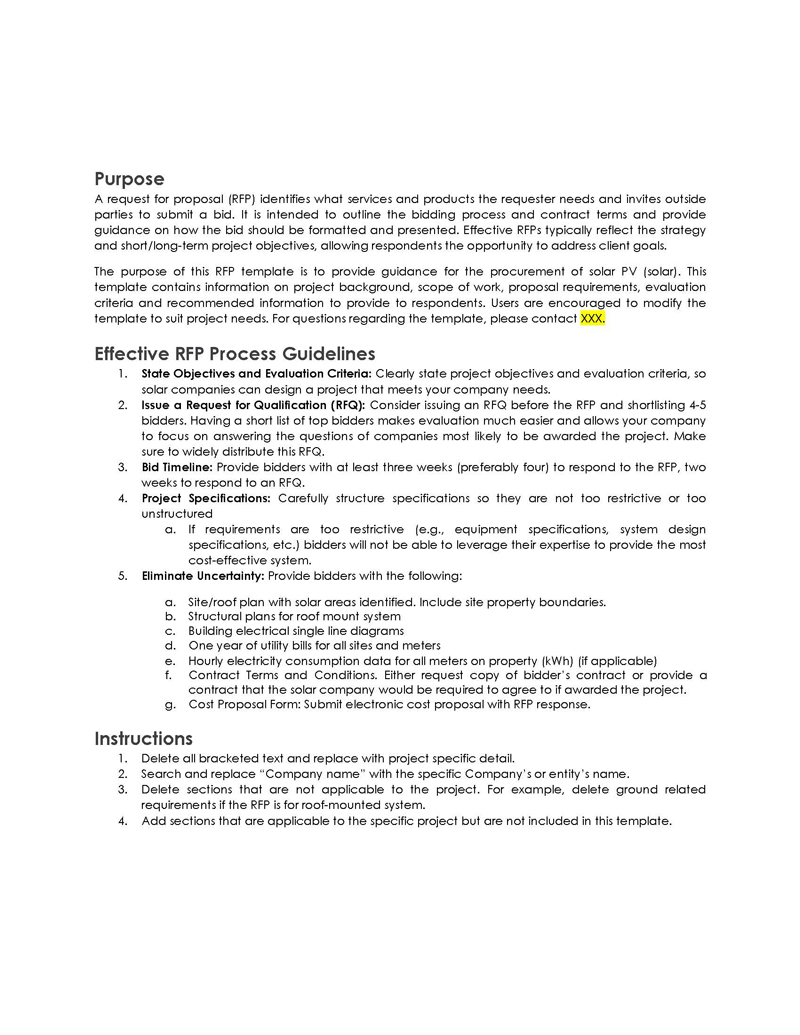
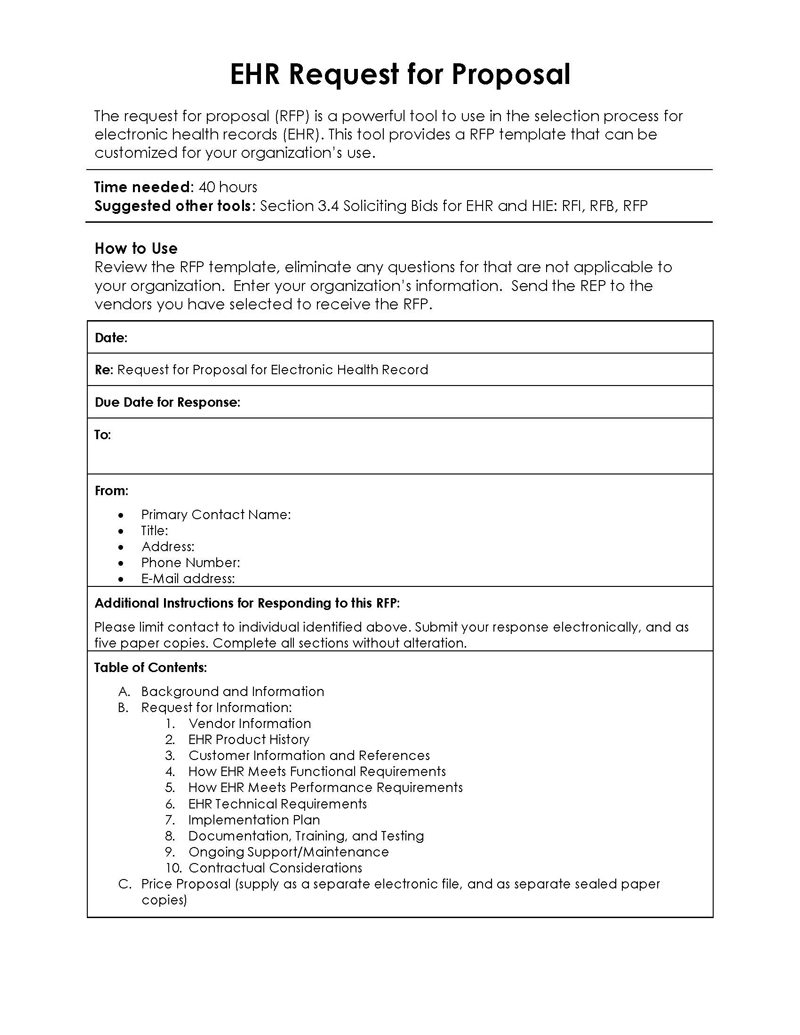
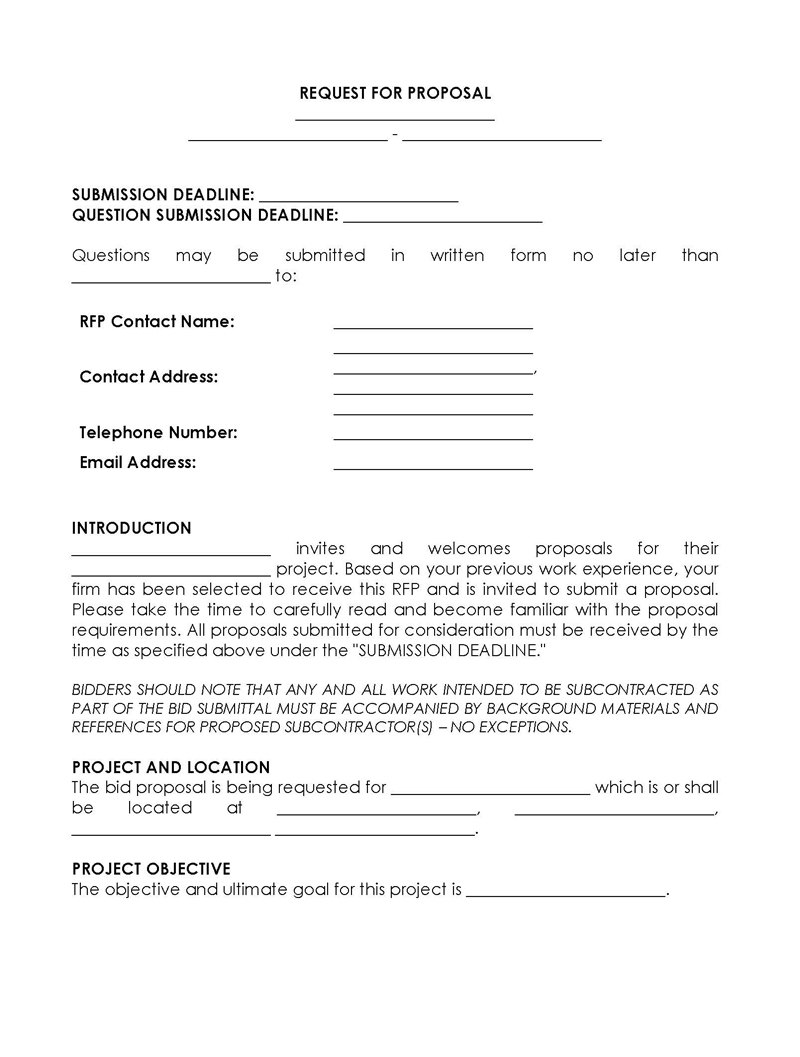
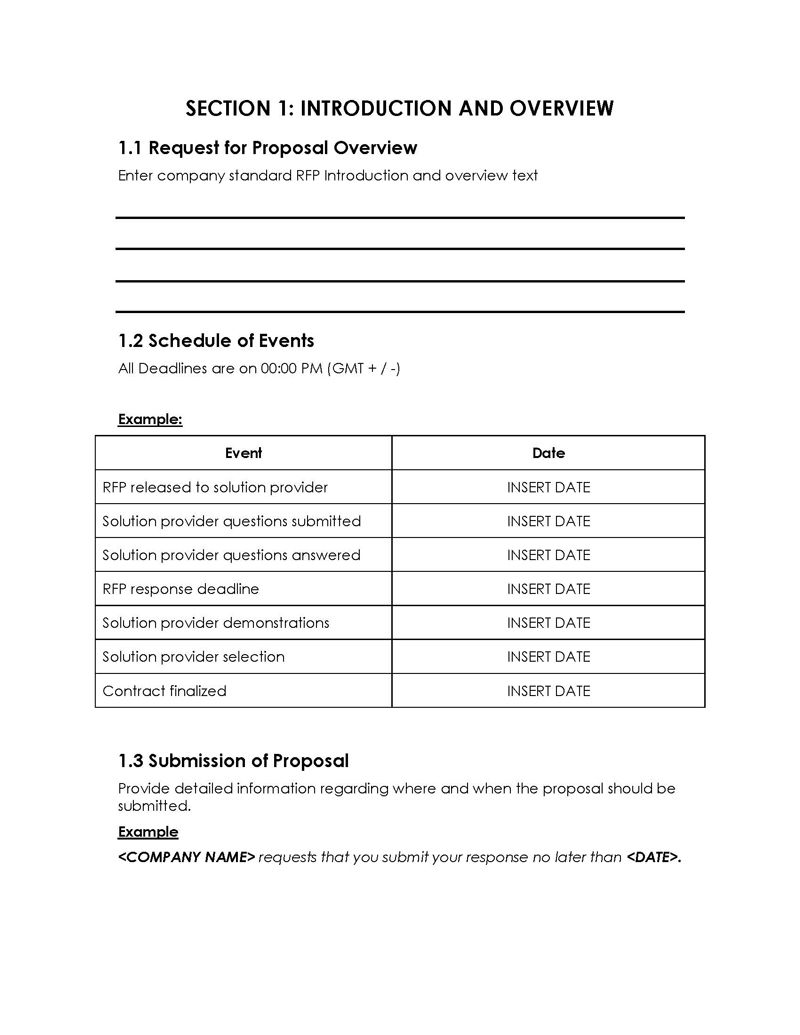
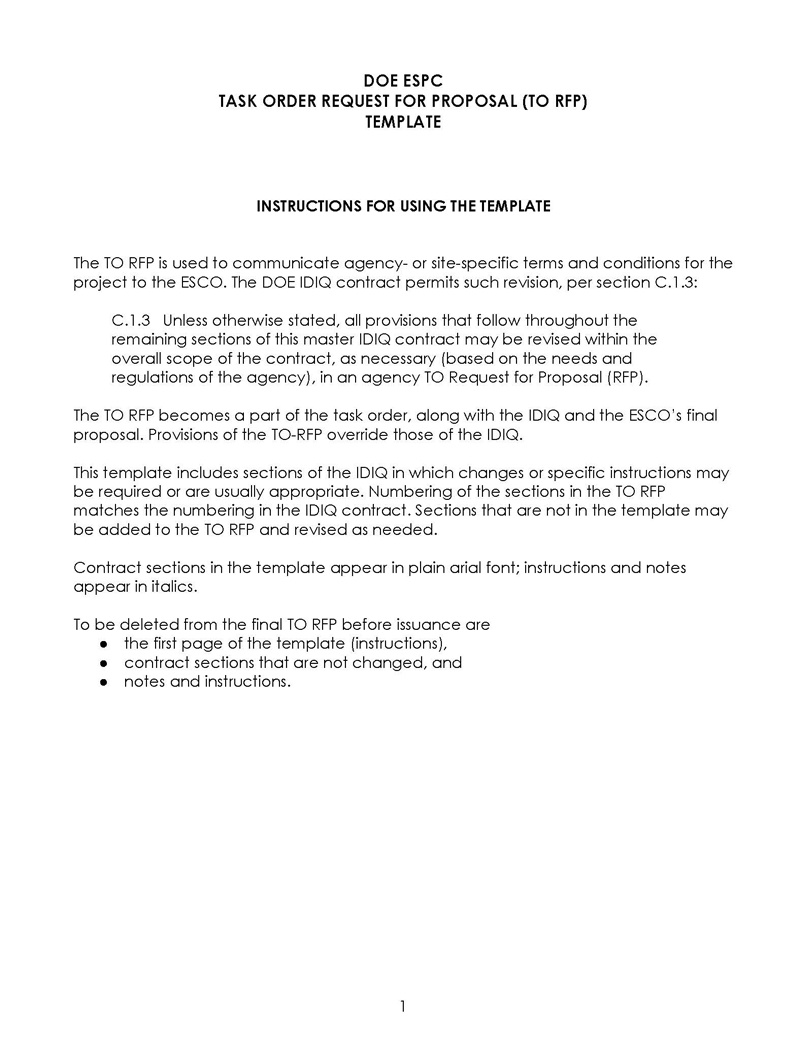
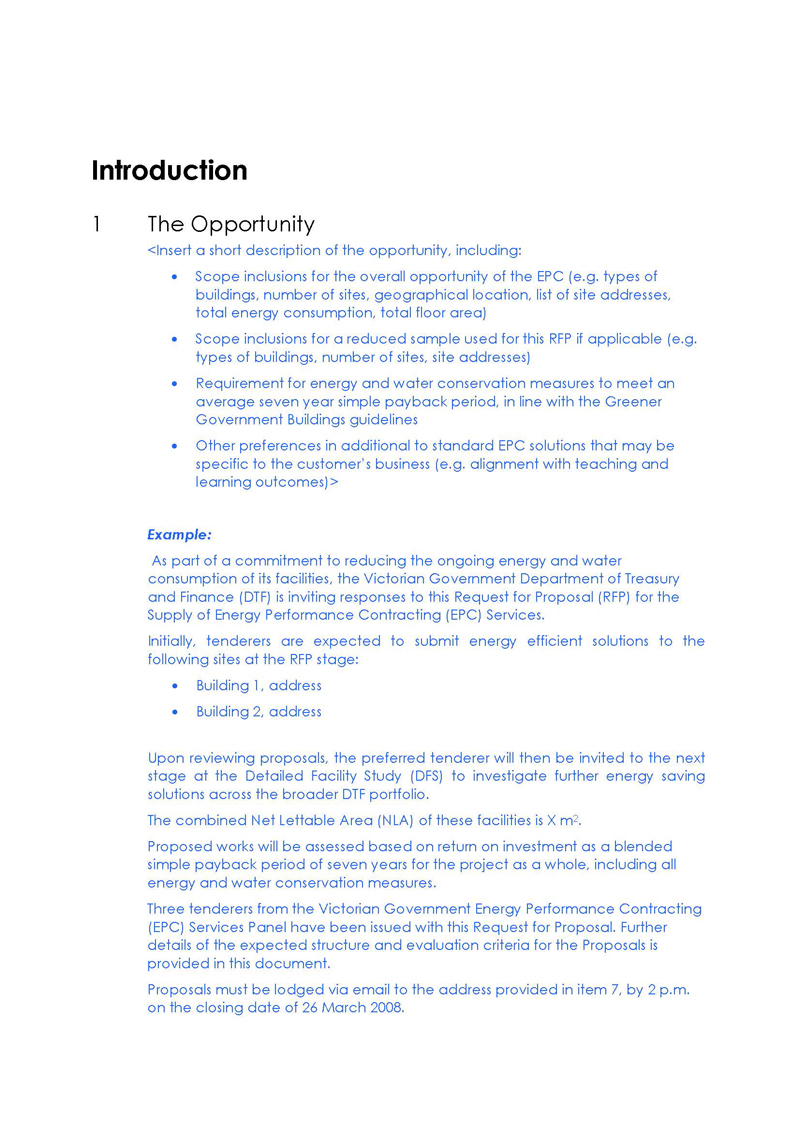
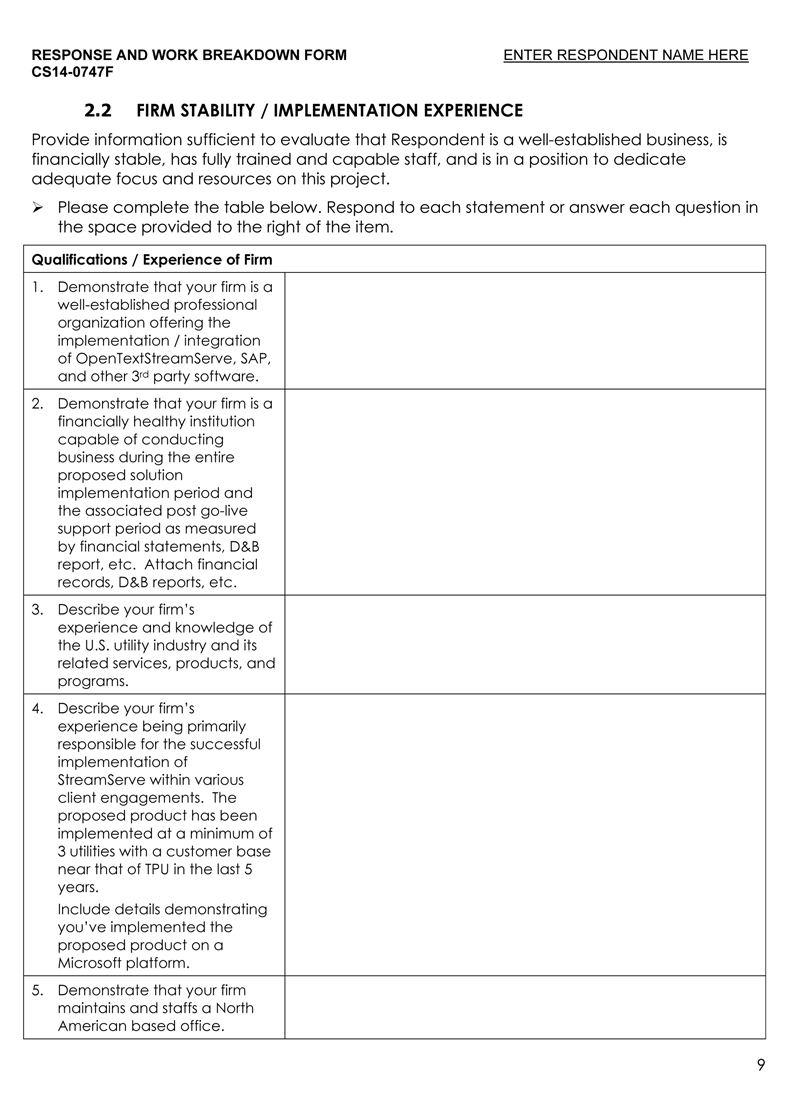
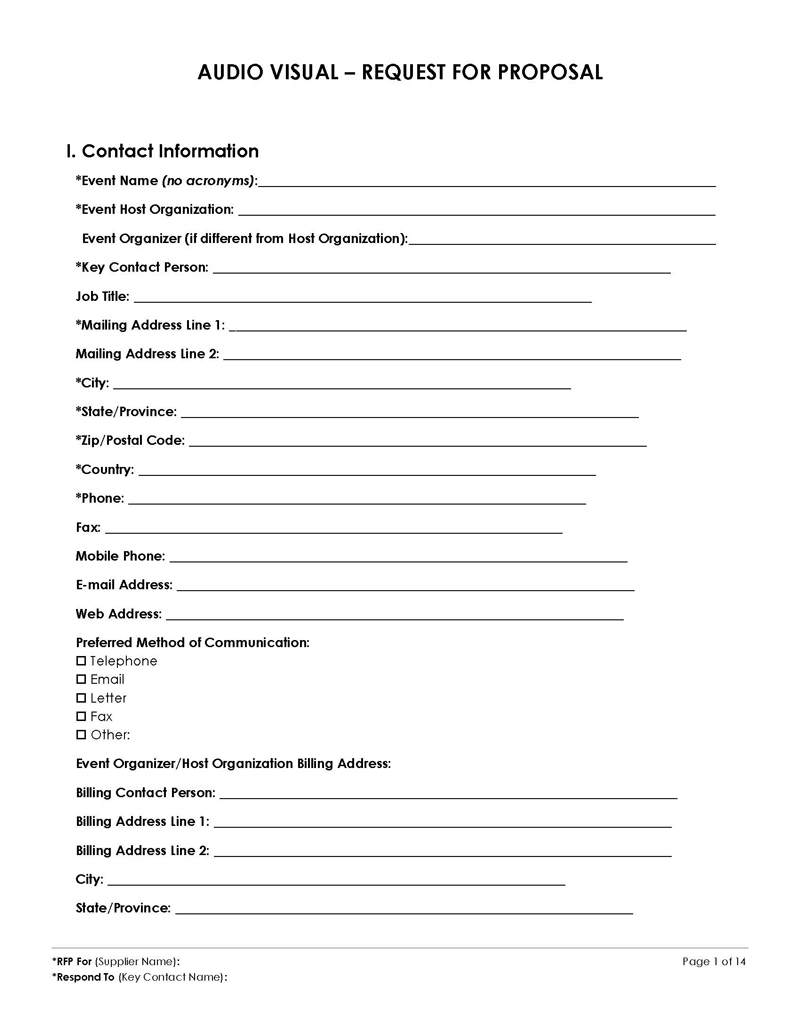
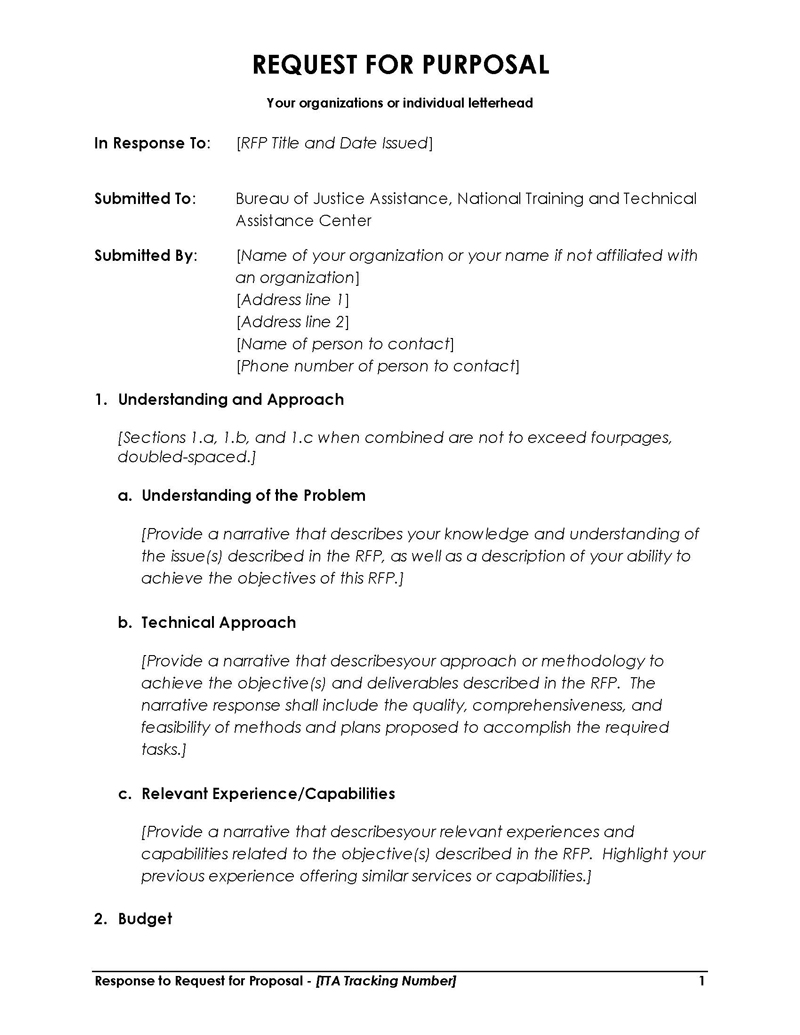
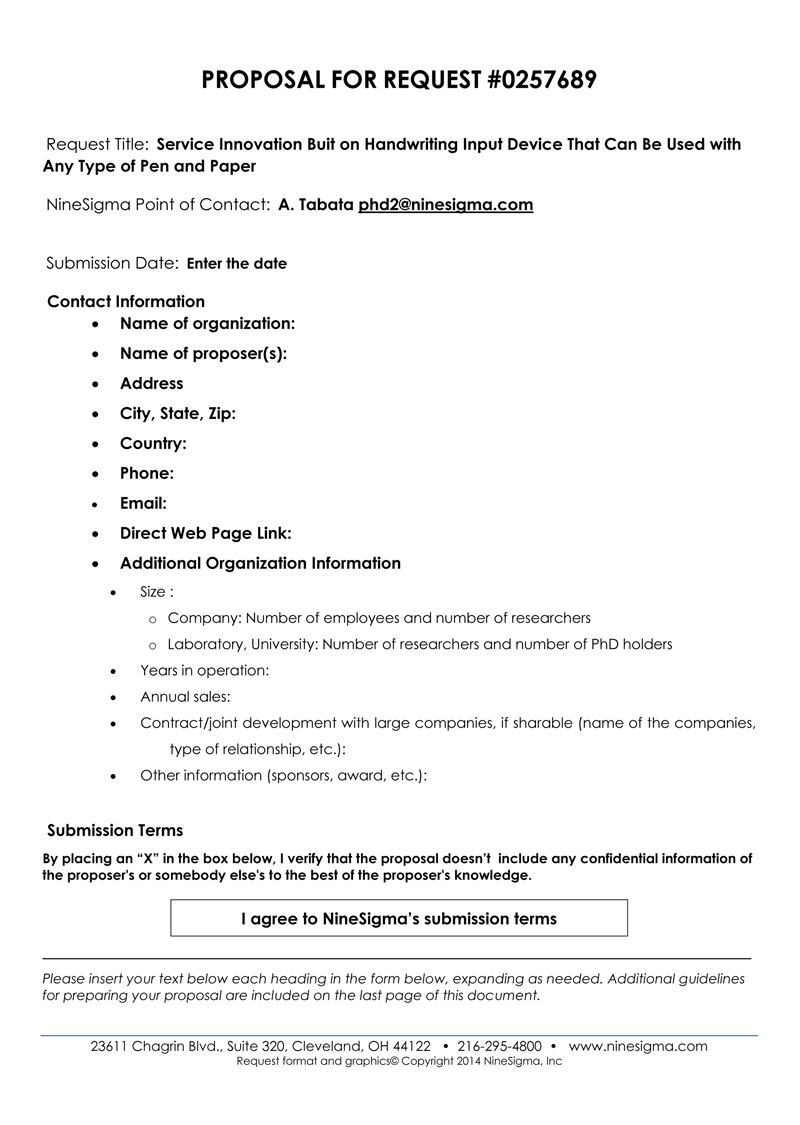
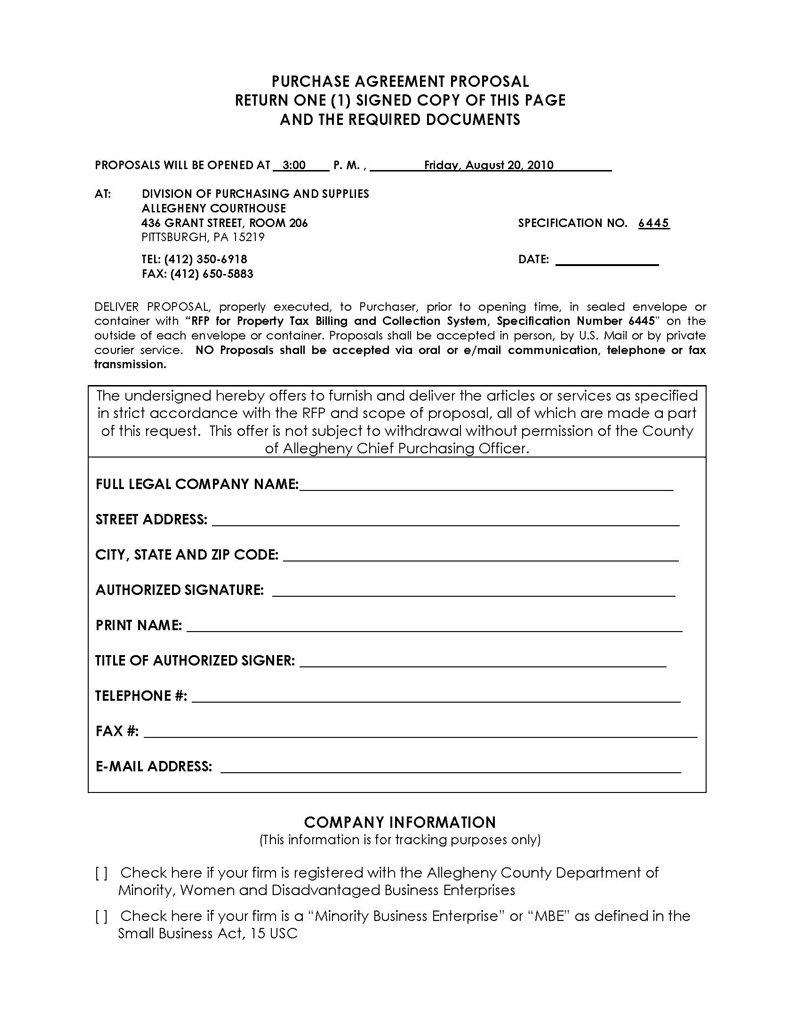
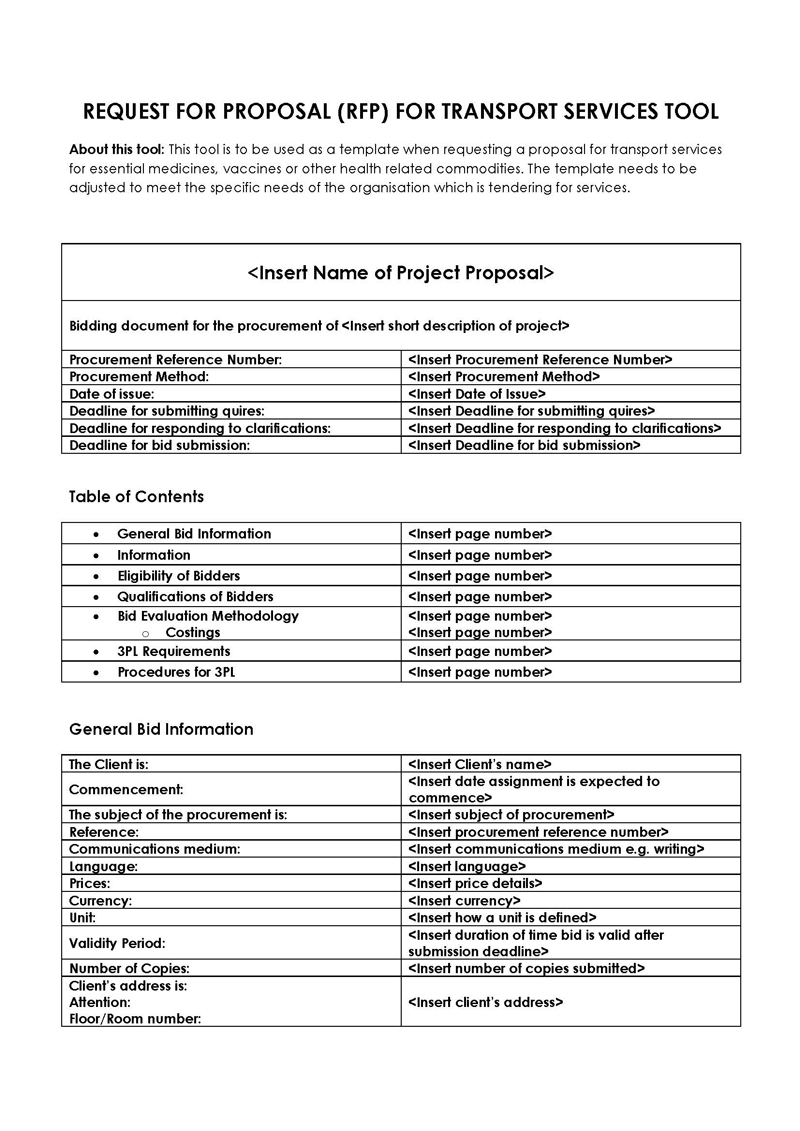
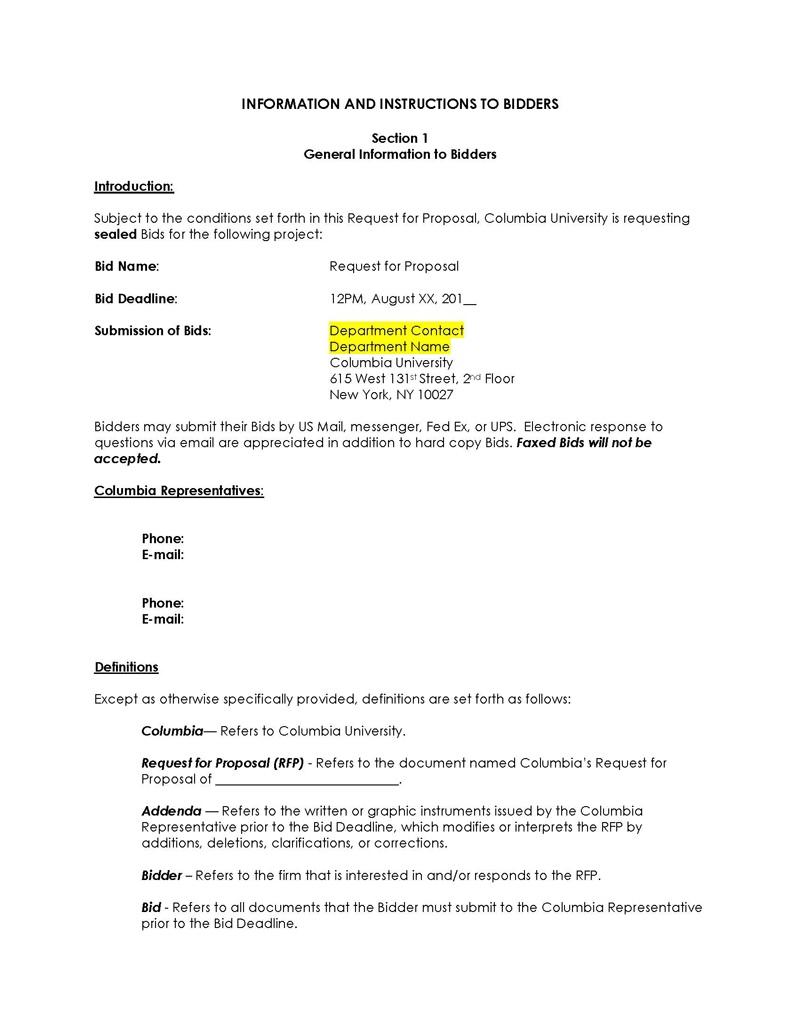
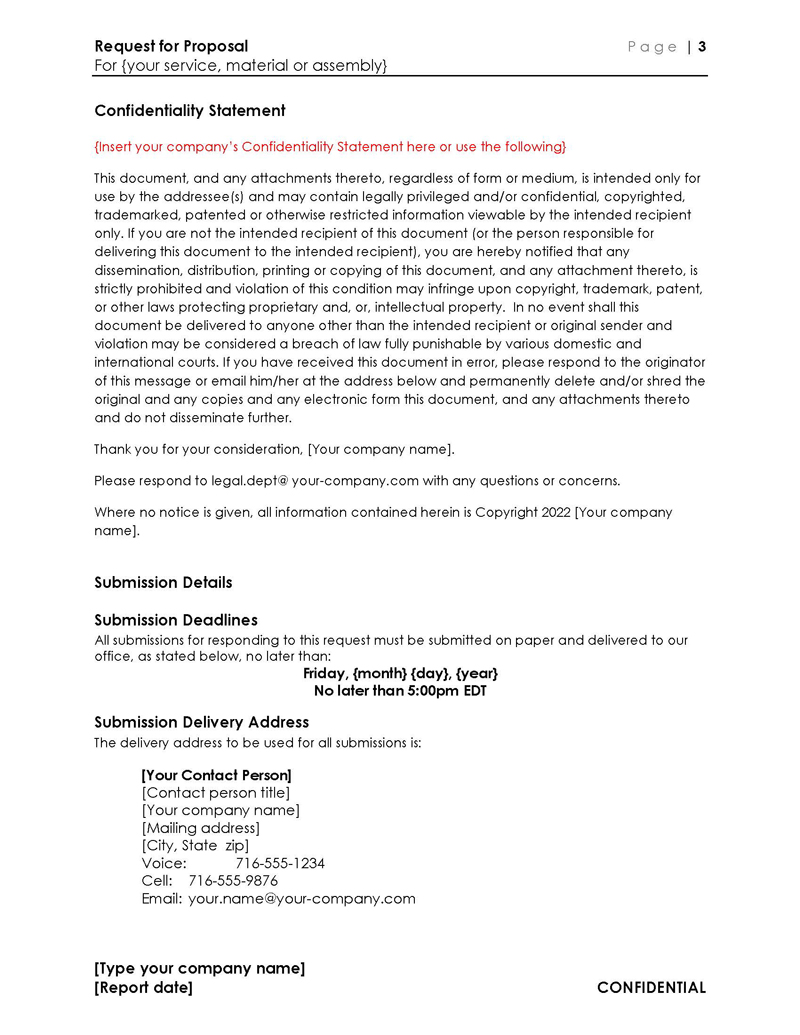
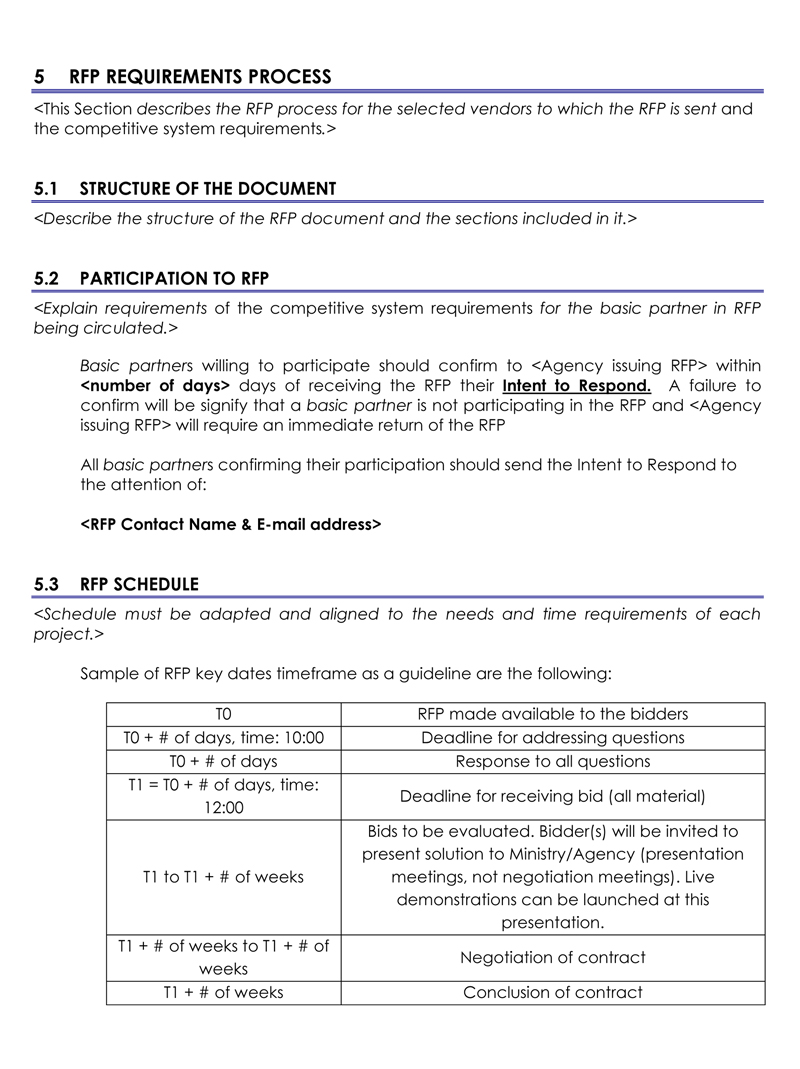
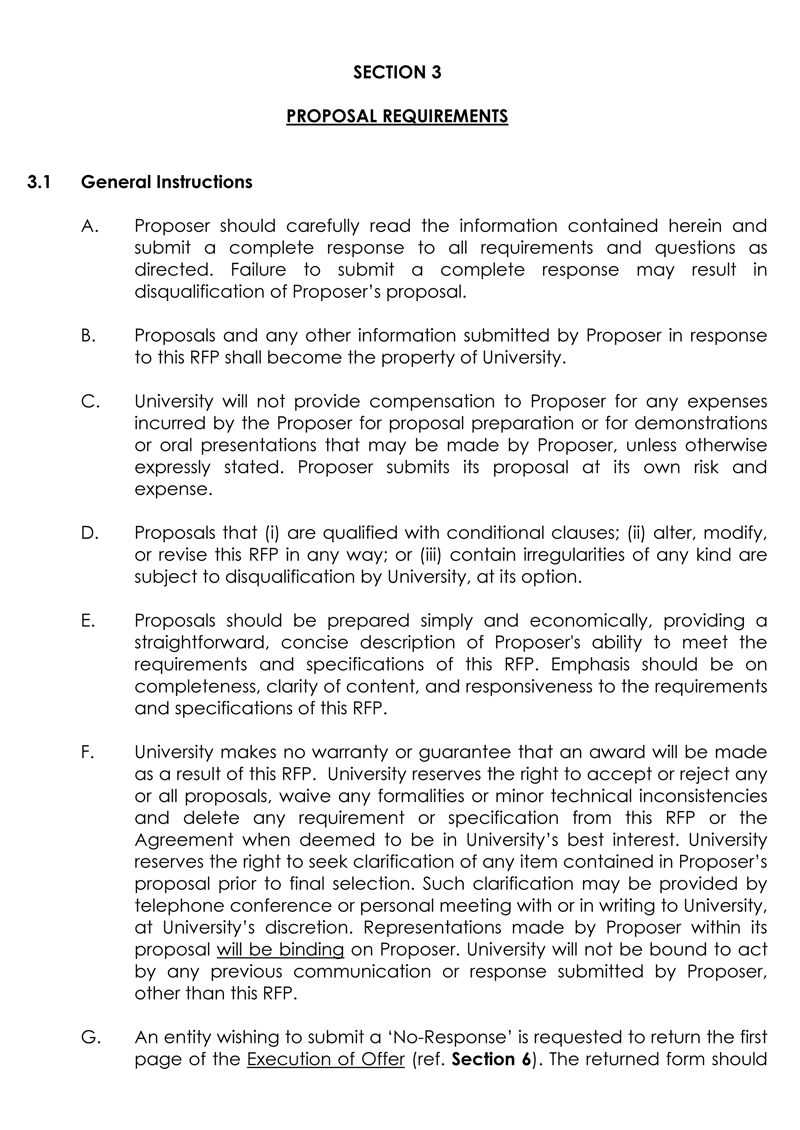
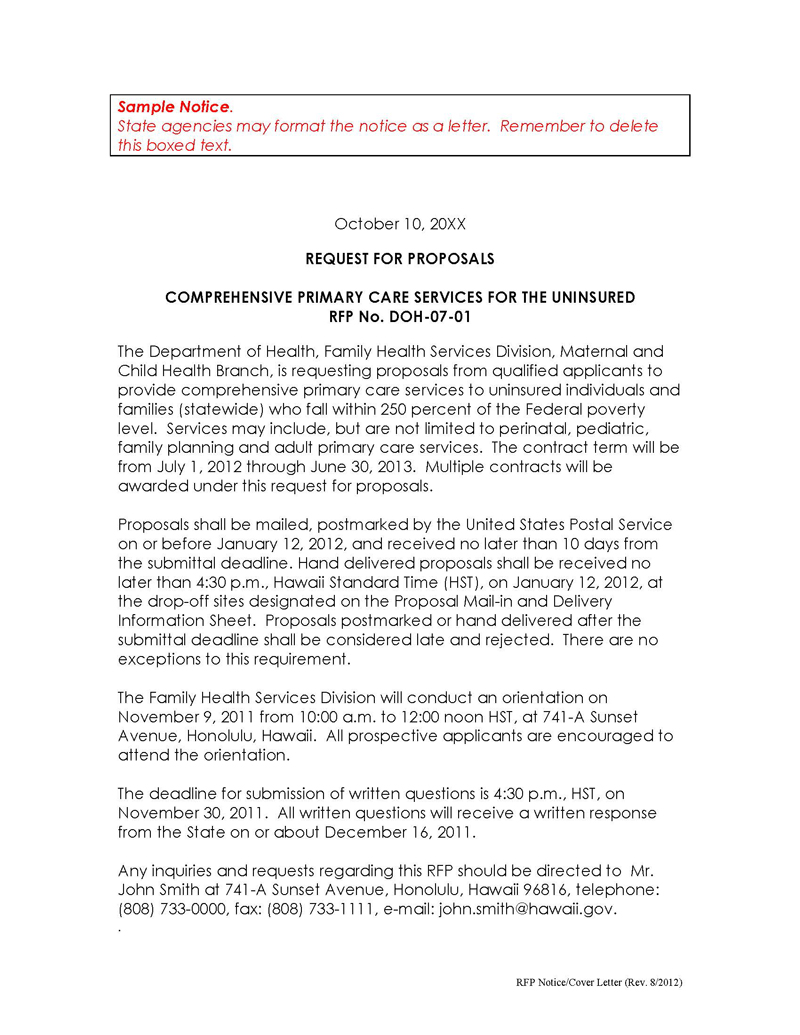
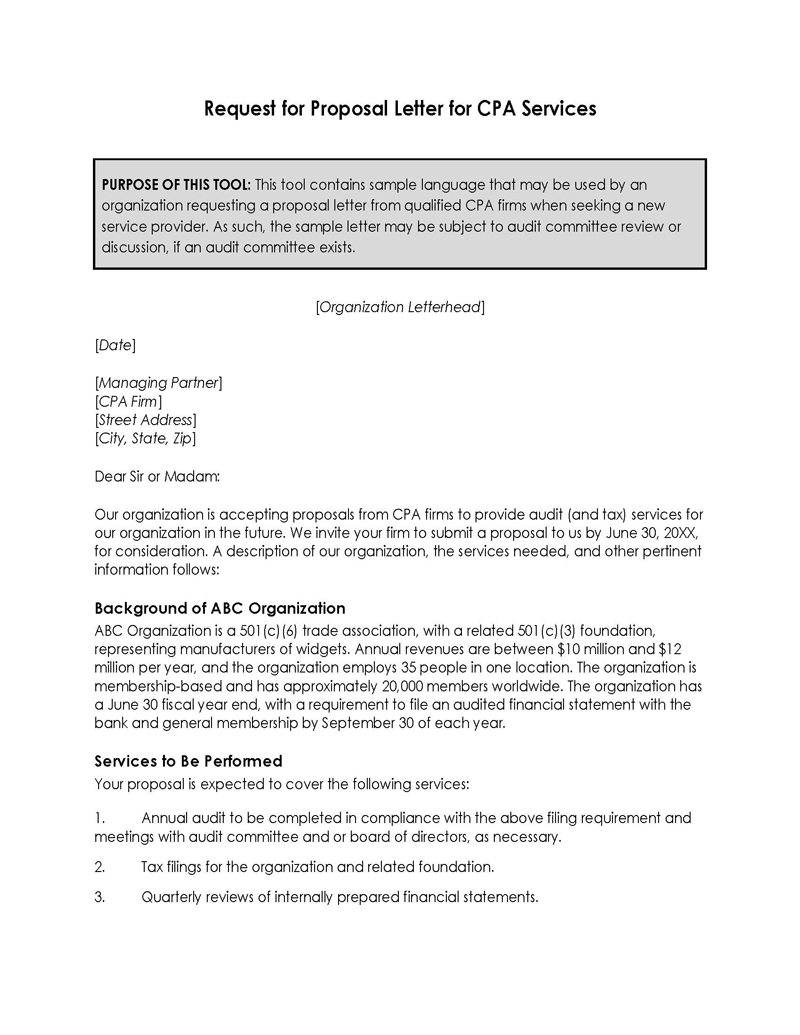
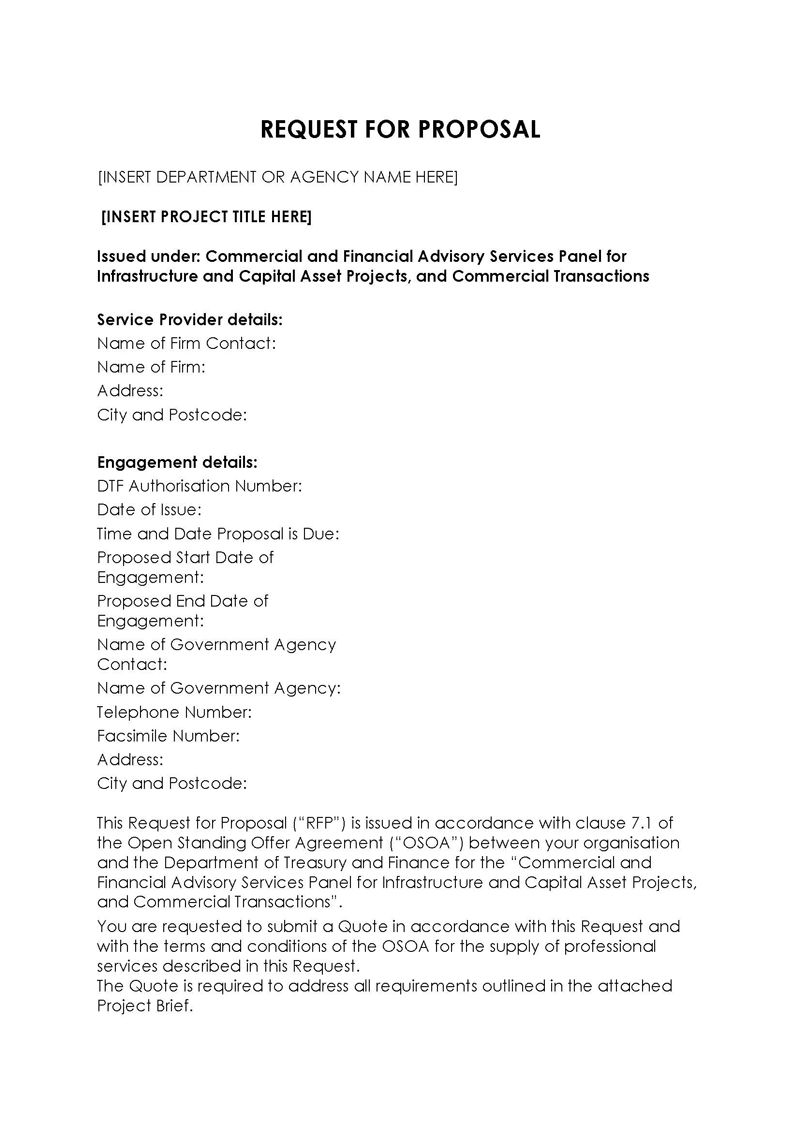
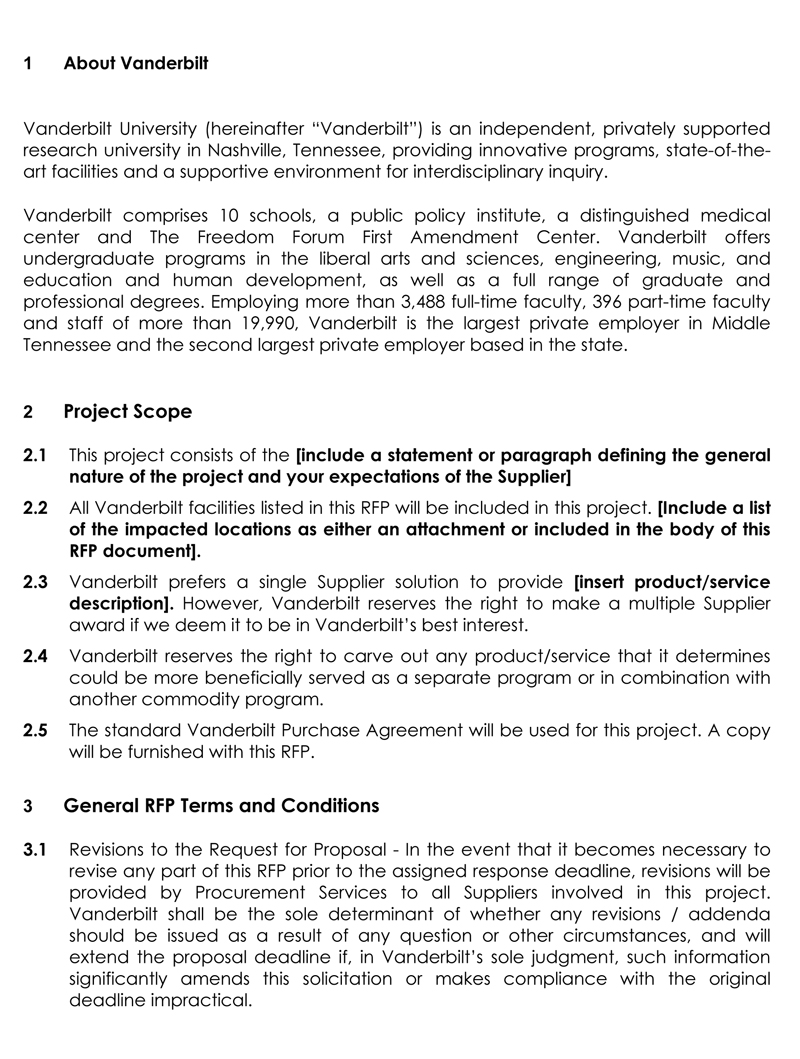
Importance of RFP
The major significances are; it notifies and invites potential contractors and vendors to present offers that address the organisation’s pain points and outlines criteria of evaluation for the offers. In addition, the document outlines the type of project, project scope, project deliverables, specifications, and timeline. As a result, the template is used to guide the bidders on the specifics of the projects to submit proposals that offer the most befitting solutions.
Additionally, most organisations, such as large companies and government agencies, launch their projects by publishing a template. This way, the organisation gets offers from multiple proponents. This increases competition among contractors, thus ensuring an organisation gets the best and most affordable offers. Templates also bring transparency, fairness, and accountability during the tendering process since all proposals are judged based on the same criteria.
RFP Vs. RFI Vs. RFQ
Vetting potential contractors and vendors is usually a long and daunting task. It involves multiple activities and documents to select the most suitable collaborator. Some of the documents used in this process are RFP (request for proposal), RFI (request for information), or RFQ (quote request).
These documents vary in the following ways:
- RFP: An RFP provides a detailed overview of what a project entails to invite potential collaborators to submit their proposed solutions to the company pain points. The proposals are vetted based on their strengths and weaknesses compared to the requirements outlined in the RFP.
- RFI: An RFI is a document that outlines an organization’s pain points and requests vendors and contractors to provide information regarding the problem(s), such as background information, experience in the field, cause of the problem, and potential solutions.
- RFQ: A request for quote/quotation is used by companies to find out how much a vendor or contractor will be charging for goods or services rendered. Often, the RFQ is confused with an RFP, mainly when it outlines the project requirements.
An RFP is used to obtain suitable proposals and identify interested collaborators, while an RFI is used to determine the most suitable and experienced vendor or contractor. On the other hand, an RFQ determines how much it will cost to work with each potential collaborator (vendor or contractor).
Scope of Work Vs. RFP
A scope of work is a project management document used after selecting the most suitable collaborator. An SOW documents the project’s deliverables and associated timelines. Therefore, an SOW is issued to the specific vendor or contractor selected after the completion of vetting. In contrast, it is sent to be used by any party interested in supplying goods and services to the organization. The SOW outlines the type of work, materials, expectations, assumptions, milestones, schedule, communication methods and deliverables, and, in some cases, the work cost.
Factors to Pre-Consider
A template should be comprehensive to effectively communicate what an organization needs from the potential vendors and contractors. To ensure this is achieved, below are several factors worth considering before preparing the request:
Create project boundaries
The project boundaries should be well-defined before it can be created. Aspects that should be considered when defining project boundaries are project budget constraints, priority goals, the flexibility of the project schedule, quality of work, etc.
Identify stakeholders
It is crucial to identify the project stakeholders before creating a request. In addition, having as much information as possible regarding the project’s beneficiaries is vital in creating an objective RFP.
Interview stakeholders
Another pre-consideration worth noting is the need to identify the stakeholders. Therefore, interviewing the stakeholders becomes a significant step before creating the template. The interview should aim to answer any vital questions regarding the project and have them define what they expect from the project.
Follow up with written RFP
Once the project boundaries, stakeholders, and stakeholders’ expectations have been defined, the request for a proposal can be written. Again, a suitable template can be used, or the organization can prepare its RFP since projects vary.
Components
The components of an RFP can vary to meet the specific requirements of different projects. However, a standard reusable template can also be used to save time and streamline the process.
The following are the standard elements that should be present in a template presented in a procedural manner that can be employed when creating a request proposal template:
Background/introduction
The template should provide an overview of the organization. This section discusses the organization’s name, founders, products or services, location, and project name.
Project goals and scope of services
A good template outlines the project deliverables and scope of services the company is looking for. The project goals should be specific. The scope of services declares the tasks and methodologies to achieve the expected deliverables. This section indicates the organization’s pain points and helps the vendor or contractor identify how their expertise can be of assistance.
Anticipated selection schedule
Organizations must declare how much time the interested parties have to submit their proposals. Therefore, the template should declare the schedule, which indicates the last date for submitting proposals and the date of announcing the selected vendors and contractors. This window gives interested parties a chance to seek clarifications where needed. Prolonged submission periods can delay the commencement of the project hence the need for a limited proposal submission timeframe/deadline is a must.
Time and place of submission of proposals
It should stipulate the guidelines for submission. This section should indicate when, where, and how to submit the proposals. In addition, this section can outline contact information, the organization’s point of contact, and other applicable instructions.
Timeline
Time is usually a key consideration when selecting vendors and contractors. Therefore, the proposal request should indicate the project’s time constraints to inform the interested parties how much time they will be awarded to complete specific tasks, phases, milestones, and the entire project. This ensures that the proposals submitted will satisfy the time factor, thus eliminating vendors and contractors who cannot meet this requirement.
Elements of Proposal
It should highlight the organization’s elements to be included in each proposal. This section often provides the first criteria for screening proposals before they are evaluated. For example, a checklist for proposal elements can cover the document’s format, submission method, vendor description, etc.
Evaluation criteria
The criteria or metrics to evaluate the proposals should be provided. This section discusses the different aspects of the proposal that will be considered to determine its ability to meet stakeholder expectations, objectives, and deliverables of the project. Evaluation criteria differ from one project to another.
Companies’ standard criteria include expertise/technical skills, task durations, cost, quality of services, the number of goods, etc. This section can also discuss examples of previous work as references for previous or current clients.
Possible roadblocks
Every project is faced with several projected challenges. Therefore, the template should identify these roadblocks to prepare vendors for possible hindrances in the execution of the project so that they may determine if they are equipped to cope with the uncertainties.
Budget
The template must also indicate the budget of the project. The budget can be given as a range. However, the values should be lower than the actual money allocated to the project to create room for negotiation.
Post-Factors to Consider
Once the request has been prepared, several actions can be taken to facilitate the process. They include:
Create scoring criteria
The scoring criteria should be defined before the RFP is published. This involves reviewing the template and ranking the evaluation criteria in order of importance.
Send it out
Afterward, the document can be sent out to potential candidates to review and make proposals. The template can be sent in any avenue of preference. Most RFPs are published on the organization’s website, newsletter, or gazetted.
Review responses
Interested parties should be given a chance to respond until the submission deadline expires. Any offers and feedback sent before the deadline can then be reviewed based on the scoring criteria developed for the specific project.
Research
After reviewing the submitted offers and solutions, research novel and unique ideas. Novel solutions are worth considering as they might be offering more efficient and affordable alternatives. Background research can also be conducted for vendors and contractors with an edge over their competitors.
Choose a contractor or vendor
Lastly, the most suitable candidate by merit should be selected. Then, a scoring test can be applied to evaluate the candidates, and the highest-scoring candidate can be selected. The selected contractor or vendor should then be contacted for negotiations to begin.
Effective Practices for Writing a Compelling RFP
The objective is to attract the most suitable vendor or contractor for the project to bid for the job. As a result, it needs to communicate the role of the collaborator as this plays a massive part in the success of the project.
Below are ways to ensure the template created serves its purpose effectively:
Collaborate with stakeholders
The process of writing it should be a collaborative effort. From the onset, all the key stakeholders should be involved to define what they expect from the project, the resources available, and how success will be measured. This way, vendors and contractors can present proposals that align with the project’s objectives.
Create a set of standard questions
One practical technique for increasing the effectiveness of the template is using standard questions that address important aspects of the project. Standard questions help gauge how the candidates will answer. In addition, the responses can be used to evaluate certain qualities such as experience, technical skills, and further insight into the presented proposals.
Consider a multi-step process
The efficiency can be enhanced by ensuring the document serves a specific purpose in the search process. This can be achieved by segmenting the search process into several steps. First, a multi-step vetting process uses all the request forms (RFI, RFP, and RFQ), with vendor profiling as the last step. As discussed earlier in this article, each request form serves its specific purpose. Therefore, a multi-step process ensures multiple objectives are achieved at each stage, and a more accurate decision is made.
Be transparent
Clarity is an essential quality of a template. Vendors and contractors cannot create quality proposals if they do not understand what the organization is looking for. Sections that should be focused on when it comes to clarifying are background information, the project’s scope, deliverables (expected outcomes and goals), and the evaluation and scoring criteria.
Process
Creating a solid request for a proposal is just one step toward conducting a successful RFP process. Although different organizations will have distinct processes, below are the essential steps that are consistent among different methods:
Gather RFP requirements
The RFP requirements have to be determined. This step involves identifying the project requirements and who will be assigned to manage and execute the process.
Write your RFP
The next step is to create the template and issue it to potential vendors and contractors. It is advisable to review the examples to determine the essential components of the RFP and customize the selected template to suit the project’s specifics.
Conduct the initial evaluation
Once the responses start trickling in, the initial evaluation should be done. Then, a scoring matrix based on the chosen criteria can be used. Finally, vendors and contractors who do not meet non-negotiable criteria should be eliminated.
Follow up with shortlisted vendors
After scoring the proposals, the most suitable candidates can be shortlisted. Each candidate’s strong points and weaknesses should be outlined to simplify the selection process. Once the submission deadline closes, no additional proposals should be accepted.
Make your final selection
Next, the most suitable candidate should be selected from those shortlisted. Negotiations can be done if there are two or more suitable candidates. Finally, the candidate that offers the best terms should be selected. It is recommended that feedback should be given until the final decision has been made, even if a vendor or contractor reaches out before then.
Create and complete the contract
Lastly, create a contract of service and invite the chosen candidate to discuss the terms of service. Once all the items have been agreed upon, the contract can be signed, and work commences.
Bottom Line
The RFP process should be conducted with much consideration for the organisation to get the best services or goods from the most capable vendor or contractor. Although it can be time-consuming, its significance cannot be stressed enough. Tools such as RFP templates, RFI, and RFQ should be used to reduce the workload. Additionally, vetting of candidates should be objective and free of bias to ensure the project’s success is not compromised.
Vendors and contractors should carefully review the template and follow its directives as closely as possible before writing their proposals. Ordinarily, the vetting process is competitive, but with thorough preparation, each candidate has a chance of getting selected as the process is created to be fair.




